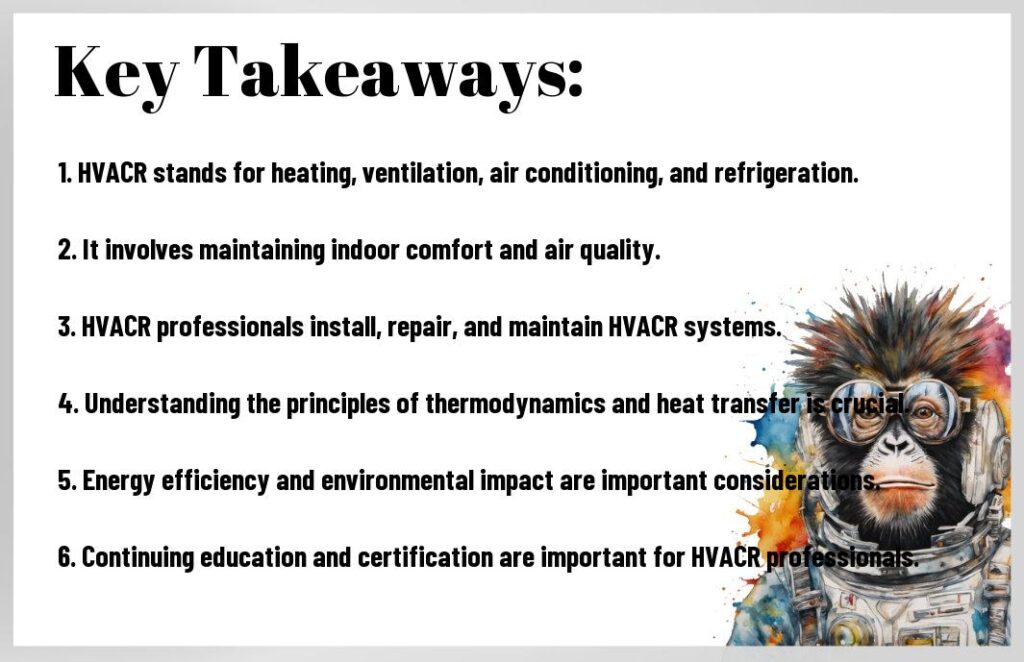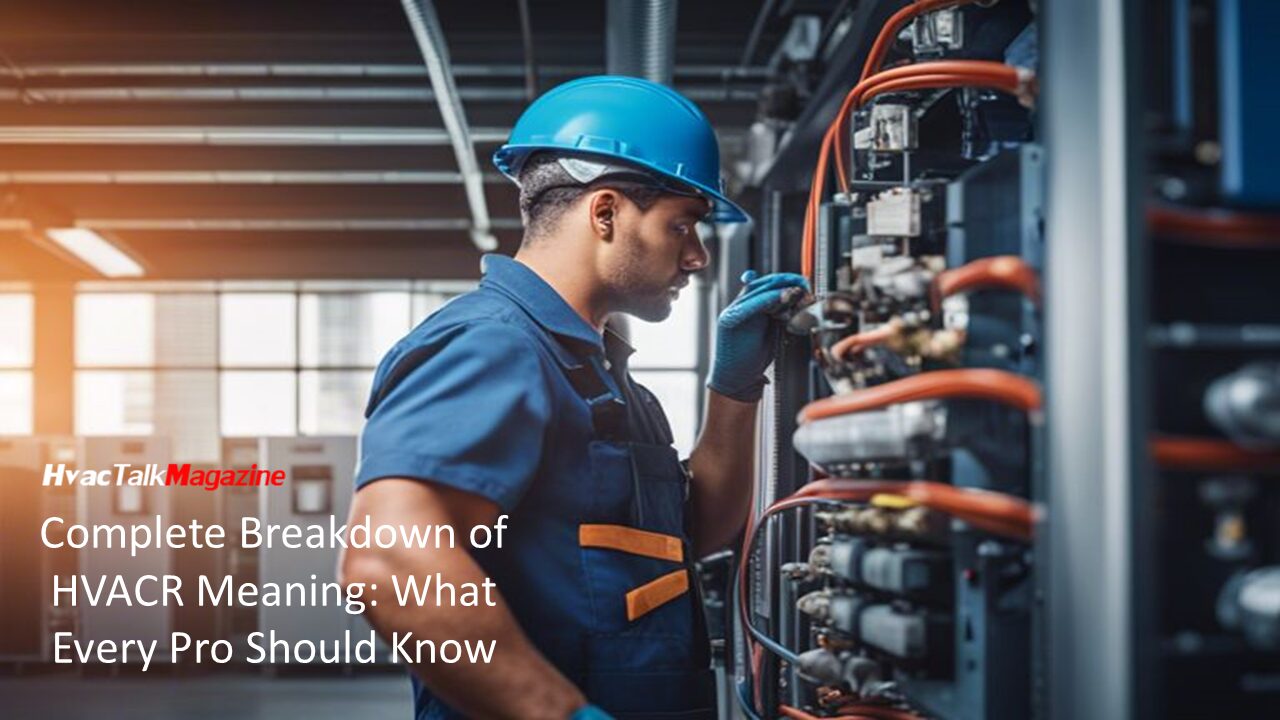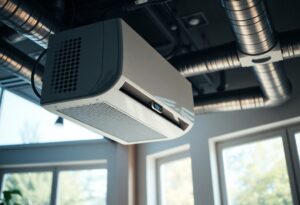Complete Breakdown of HVACR Meaning: What Every Pro Should Know
Many HVAC professionals may have encountered the term HVACR in their line of work, but do you know what each letter represents? This post will provide a comprehensive breakdown of the HVACR acronym, shedding light on its vital significance in the heating, ventilation, air conditioning, and refrigeration industry. Understanding HVACR is crucial for professionals in this field to ensure efficient and sustainable operations while delivering comfort and safety to building occupants.
Find and Post Jobs on the HVACJobsCenter here:
Key Takeaways:
- HVACR: Stands for Heating, Ventilation, Air Conditioning, and Refrigeration.
- Vital Systems: HVACR systems are crucial for maintaining comfortable indoor temperatures, air quality, and humidity levels.
- Complex Components: HVACR systems consist of intricate components like compressors, coils, fans, and thermostats.
- Energy Efficiency: Upgrading to newer HVACR systems can significantly improve energy efficiency and reduce utility costs.
- Professional Maintenance: Regular maintenance by HVACR professionals is vital to ensure optimal performance and longevity of the systems.
- Environmental Impact: Properly maintained HVACR systems contribute to reducing energy consumption and greenhouse gas emissions.
- Constant Evolution: The HVACR industry is continuously evolving with advancements in technology and regulations, requiring professionals to stay updated.
TradesmanCE – Virginia HVAC: 10% off TradesmanCE.com Virginia HVAC continuing education using promo code “deal22”. Click to see online courses!
What is the HVACR Meaning?
Definition and History
A HVACR system stands for Heating, Ventilation, Air Conditioning, and Refrigeration. These systems are imperative for maintaining comfortable indoor temperatures and air quality. The history of HVACR dates back to ancient Rome, where aqueducts were used to circulate cool water through the walls of buildings to control the temperature.
Importance in Modern Life
Life today heavily relies on HVACR systems for comfort and safety. From keeping us warm in winter to cool in summer, these systems ensure optimal indoor climate conditions. They also play a crucial role in preserving food and medicine by providing proper refrigeration and storage temperatures.

The Four Components of HVACR
Heating Systems
Components of heating systems include furnaces, heat pumps, boilers, and electric heaters. These systems work to generate warmth and maintain comfortable temperatures indoors during colder months.
Ventilation Systems
Ventilation systems are crucial in HVACR to ensure proper airflow and indoor air quality. They include fans, ductwork, and air filters to exchange and circulate air efficiently throughout the building.
Heating and cooling systems rely on proper ventilation to distribute air effectively. Ventilation systems help regulate humidity levels and remove airborne contaminants, creating a healthier and safer indoor environment.
Air Conditioning Systems
The components of air conditioning systems consist of compressors, evaporators, condensers, and refrigerant lines. These systems cool and dehumidify air to maintain comfortable temperatures during hot weather.
A properly functioning air conditioning system not only provides comfort but also helps to improve indoor air quality by reducing humidity levels and filtering out pollutants and allergens from the air.
Refrigeration Systems
Refrigeration systems are necessary for preserving perishable items and maintaining cold temperatures in spaces like refrigerators and freezers. They use compressors, condensers, evaporators, and refrigerants to remove heat and create a cooling effect.
Conditioning systems play a vital role in food storage, medical applications, and industrial processes where precise temperature control is necessary to ensure product quality and safety.
TradesmanCE – Texas HVAC: 10% off TradesmanCE.com Texas HVAC continuing education using promo code “deal22”. Click to see online courses!
Tip of the Day
Enhance your skills and knowledge with top-rated books for HVACR technicians! Access expert insights, practical guides, and the latest industry standards to excel in your career.
👉 Shop now and build your professional library with essential HVACR technician books. Elevate your expertise and advance your career today!
HVACR Systems in Different Settings
Residential HVACR Systems
Once again, residential HVACR systems are designed to provide heating, ventilation, air conditioning, and refrigeration solutions for homes. These systems are crucial for maintaining comfortable indoor temperatures throughout the year.
Commercial HVACR Systems
HVACR systems in commercial settings are crucial for maintaining a comfortable environment for employees and customers alike. Proper maintenance of these systems is crucial to ensure they operate efficiently and safely.
To ensure the smooth operation of commercial HVACR systems, regular inspections, routine maintenance, and prompt repairs are necessary. Failure to address issues promptly can lead to costly downtime and potential safety hazards.
Industrial HVACR Systems
Residential HVACR systems are primarily designed for use in large industrial facilities. These systems are responsible for providing adequate heating, cooling, and ventilation in industrial settings.
Commercial HVACR systems in industrial settings often require heavy-duty equipment to handle the large scale of the facility and maintain optimal working conditions for employees.
TradesmanCE – Oklahoma HVAC: 10% off TradesmanCE.com Oklahoma HVAC continuing education using promo code “deal22”. Click to see online courses!
Key Concepts in HVACR
Thermodynamics and Heat Transfer
Transfer of heat plays a critical role in HVACR systems. Understanding thermodynamics and heat transfer principles is important for HVACR professionals to ensure efficient operation and optimal performance of heating and cooling systems.
Refrigeration Cycles
HVACR systems rely on refrigeration cycles to transfer heat from one location to another. These cycles involve the continuous process of compression, condensation, expansion, and evaporation to maintain desired temperatures in various settings such as homes, offices, and industrial facilities.
Refrigeration cycles are at the heart of HVACR systems, allowing for the transfer of heat from indoor spaces to the outdoors, and maintaining comfortable temperatures inside buildings even in extreme weather conditions.
Airflow and Pressure
Airflow and pressure are crucial factors in HVACR systems, determining the distribution of air and maintaining proper ventilation. Understanding the principles of airflow and pressure is important for designing and maintaining efficient heating, cooling, and ventilation systems.
Proper airflow and pressure control ensure that conditioned air is evenly distributed throughout a space, optimizing comfort and energy efficiency. HVACR professionals must pay close attention to airflow and pressure settings to prevent issues such as uneven temperatures, poor air quality, and system inefficiencies.
Based on the informative nature of the article, the content will aim to provide a clear and concise breakdown of key concepts in HVACR, important for professionals in the field.

HVACR Tools and Equipment
Hand Tools and Instruments
To excel in the HVACR industry, professionals must possess a range of hand tools and instruments. These include wrenches, screwdrivers, pliers, thermometers, gauges, and leak detectors. Proper use of these tools is crucial for accurate diagnosis and effective repair of HVACR systems.
Power Tools and Machinery
The use of power tools and machinery such as drills, saws, and vacuum pumps can significantly enhance the efficiency of HVACR professionals. These tools enable quicker installation and servicing of HVACR systems, saving time and improving overall productivity.
TradesmanCE – New Mexico HVAC: 10% off TradesmanCE.com New Mexico HVAC continuing education using promo code “deal22”. Click to see online courses!
Testing and Measurement Devices
Testing and measurement devices like multimeters, manometers, and airflow meters are necessary for evaluating HVACR system performance. Accurate readings from these devices ensure optimal system operation and help in identifying potential issues before they escalate.
Safety Precautions and Regulations
Personal Protective Equipment
To ensure safety in HVACR, professionals must wear appropriate Personal Protective Equipment (PPE). This includes safety glasses, gloves, steel-toed boots, and helmets to protect against potential hazards.
Hazardous Materials Handling
Any handling of hazardous materials should be done with extreme caution. It is crucial to follow proper protocols for storage, transportation, and disposal to prevent accidents and contamination.
This includes being trained in the proper handling of refrigerants, chemicals, and other hazardous materials commonly used in HVACR systems.
TradesmanCE Overall (Electrical, Contractor, Plumbing & HVAC): 10% off TradesmanCE continuing education using the “Deal22” code. Click to see electrical, contractor, plumbing, & HVAC courses.
Industry Standards and Compliance
Materials used in HVACR systems must comply with industry standards to ensure efficiency and safety. Compliance with regulations set by organizations like ASHRAE and EPA is necessary to maintain quality and protect the environment.
Equipment used in HVACR must also meet industry standards to guarantee optimal performance and minimize risks associated with faulty or substandard components.
Find and Post Jobs on the HvacJobsCenter Find a Job in HVAC
Conclusion
Summing up, understanding the complete breakdown of HVACR is crucial for every professional in the industry. From knowing the meanings of each letter to identifying the key components and functions involved, having a strong grasp of HVACR terminology is necessary for success in this field. By familiarizing themselves with these concepts, professionals can effectively communicate, troubleshoot, and excel in the world of heating, ventilation, air conditioning, and refrigeration.
FAQ
Q: What is the HVACR Meaning?
A: HVACR stands for Heating, Ventilation, Air Conditioning, and Refrigeration.
Q: What is the primary purpose of HVACR systems?
A: HVACR systems are designed to control the temperature, humidity, and air quality in indoor environments.
Q: How do heating systems work in HVACR systems?
A: Heating systems in HVACR systems work by generating heat through furnaces, boilers, or heat pumps and distributing it throughout a building.
Q: What is the role of ventilation in HVACR systems?
A: Ventilation in HVACR systems is vital for providing fresh air circulation and removing indoor air pollutants to maintain a healthy indoor environment.
Q: What are some common types of air conditioning systems used in HVACR?
A: Common types of air conditioning systems used in HVACR include split systems, packaged systems, ductless mini-split systems, and central air conditioning systems.
Q: How do refrigeration systems fit into HVACR?
A: Refrigeration systems in HVACR are responsible for cooling and maintaining specific temperatures in spaces such as refrigerators, freezers, and cold storage units.
Q: Why is it important for professionals to have a complete breakdown of HVACR?
A: Having a comprehensive understanding of HVACR systems is crucial for professionals to design, install, maintain, and repair these systems efficiently and effectively.
Follow Us on Google Chrome
- To get started, switch to Google Chrome Browser
- Already on our site
- Top right, tap the 3 dots
- Bottom right, tap follow
- You are done.
Learn more and join our mailing list for updates.
This post has been written by Team HVAC Talk Magazine. Stay informed and connected with the latest in HVAC—join us for expert advice, troubleshooting tips, and news updates. Don’t miss out, follow us now! #HVACExperts #HVACTips #StayInformed #HVACProTalk








